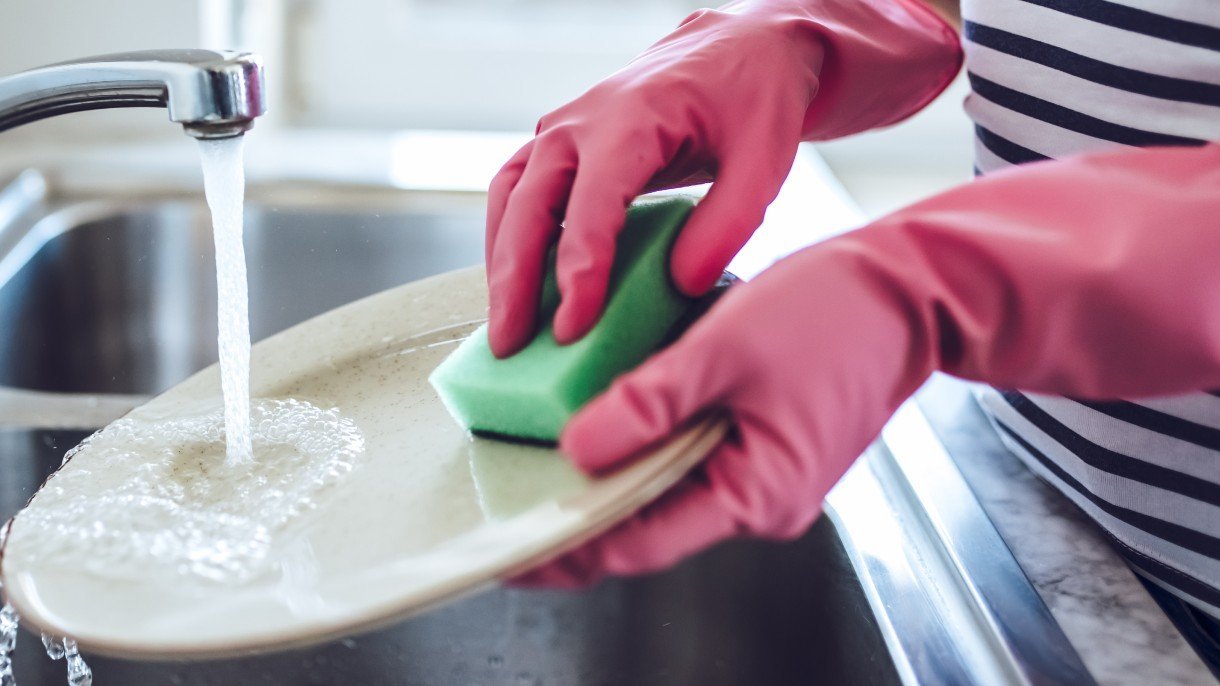How Do You Sanitize a Dish Sponge?

According to a 2017 study by Scientific American, a single kitchen sponge can have over 300 different types of bacteria, with a saturation of up to 45 billion/square centimeter.
This means parts of your dish sponge are just as bacteria-infested as your toilet – quite a scary thought indeed.
And to think that this is what you use to clean utensils that come into contact with your mouth – we shudder at the repercussions.
That is why today we are going to do a deep dive on the best ways to sanitize your kitchen sponge. Finally, your dishes can actually be as clean as possible.
How do you sanitize a dish sponge?
There are several ways to effectively sanitize a dish sponge. Here are some of the best ones:
Can you use bleach to sanitize your dish sponge?
The most effective way to sanitize your dish sponge is to use bleach. Just add ¾ cup of bleach to a gallon of water and soak your sponge in the mixture for 5 minutes before rinsing it.
This alone is enough to kill up to 99.9% of bacteria.
Can microwaving a dish sponge kill bacteria?
Using the microwave is yet another effective way of sanitizing your dish spine – it can kill up to 99.9% of germs.
Just add a little bit of water to your sponge and zap it at high temperatures for 1 to 2 minutes. While scrub sponges only need a ¼ cup of water and 1 minute of microwaving, cellulose ones need ½ cup of water and 2 minutes.
Before you do this though, ensure the sponge is free of any food crumbs and debris. Also, keep an eye on it as it microwaves – it can get burnt if you overdo it.
Can you sanitize a kitchen sponge by putting it in the dishwasher?
Yes, you can use your dishwasher to kill the germs in your dish sponge.
To clean your sponge using the dishwasher, just toss it in with a regular load and use the “heated dry” setting.
Can vinegar be used to clean your dish sponge?
If you are looking for a natural cleaning option, full-strength vinegar is the way to go.
All you have to do is remove any particles from the sponge, rinse it, and then soak it in full-strength vinegar for 5 minutes. As long as you ensure that the sponge is fully submerged, this should work perfectly.
Afterward, rinse and squeeze it before using it again.
We have an important tip for you though – always wear rubber gloves when cleaning your sponge this way; the vinegar can irritate your skin.
How often do you need to clean your dish sponge?
To keep bacteria at bay, you should clean your sponge every few days.
Additionally, it is a good idea to use several of them on rotation so that each one gets enough time to dry out properly before it is used again.
You should also keep your sponges away from raw juices from meat – only use disposable paper to deal with such cases.
Throw away your old sponges
No matter how well you take care of your dish sponges, it’s important to replace them regularly – ideally every 1 to 3 weeks. This way bacteria don’t have enough time to accumulate anyway.
The more disciplined you are with this, the cleaner your kitchen and home will be.
